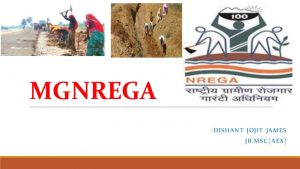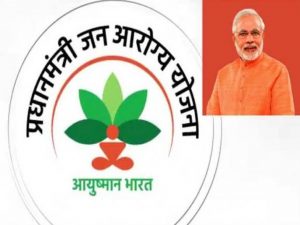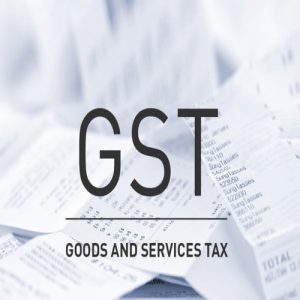Today Current Affairs: 27th November 2021 for UPSC IAS exams, State PSC exams, SSC CGL, State SSC, RRB, Railways, Banking Exam & IBPS, etc
Table of Contents
O-SMART Scheme:

The Cabinet Committee on Economic Affairs approved the continuation of the ‘Ocean Services, Modelling, Application, Resources and Technology (O-SMART)’ Scheme for the period of 2021-26.
- It is a government scheme that aims at promoting ocean research and setting up early warning weather systems.
- It was launched in August 2018.
- It also aims at addressing ocean development activities such as technology, services, resources, science, and observations as well as offering required technological assistance for implementing aspects of the Blue Economy.
- It comprises seven sub-schemes which are being implemented by autonomous institutes of the Ministry of Earth Sciences (MoES).
- Sub-Schemes are: Ocean Technology, Ocean Modelling and Advisory Services (OSMAS), Ocean Observation Network (OON), Ocean Non-Living Resources, Marine Living Resources and Ecology (MLRE), Coastal Research and Operation, Maintenance of Research Vessels
Havana Syndrome:

The US Federal Bureau of Investigation (FBI) has said that dealing with the issue of Havana Syndrome is a top priority and that it will keep investigating the cause and how to protect staff.
- In late 2016, a few diplomats from the USA and their employees had reported certain usual symptoms during their stay in Havana, Cuba.
- They experienced some odd physical sensations and heard peculiar sounds, after which they started feeling sick.
- The US had even accused Cuba of carrying out sonic attacks. But Cuba denied the accusations of the sonic attacks and refused awareness of any such illness or syndrome.
- Ever since many bodies and institutions have been researching the cause of the Havana syndrome and many plausible factors have been discovered till date.
- The symptoms of the syndrome include Nausea, Severe headaches, Fatigue, Dizziness, Sleep problems, Hearing loss.
- A few of those who had been affected more faced chronic issues like vestibular processing and cognitive problems.
- In 2020, a report by the National Academies of Sciences (NAS), US found directed microwave radiation to be the plausible cause of the Havana syndrome.
Mahatma Gandhi National Rural Employment Guarantee Scheme:

The Finance Ministry has allocated additional funds of ₹10,000 crore as an interim measure for the Mahatma Gandhi National Rural Employment Guarantee Scheme (MGNREGS) after it ran out of funds allocated in the budget, according to the Ministry of Rural Development (MoRD).
- More funds may be forthcoming based on the “assessment of demand,” added the Ministry.
- The extra money was allocated on November 5. However, the scheme’s financial statement on November 25 still reflects a negative net balance of ₹9,888 crore.
- Despite the additional allocations, the funds available for the scheme stand at ₹76,340 crore, well below the ₹86,229 crore which have been incurred as expenditure, including payments due for wages and materials.
- Meanwhile, more than ₹1,170 crore worth of wage payments for MGNREGS workers are still pending.
- Lack of funds results in suppression of demand for work and delayed payment of wages to workers.
- These are violations of the Act; they also constrain economic recovery, said an open letter from more than 70 economists to the Prime Minister.
Ayushman Bharat Pradhan Mantri Jan Arogya Yojana:

Summary findings from the fifth edition of the National Family Health Survey, released recently showed a 12.3 percentage point increase over the previous edition of the survey in the coverage of health insurance to 41% of households surveyed, an indication of the impact of the government’s flagship the Ayushman Bharat Pradhan Mantri Jan Arogya Yojana (AB-PMJAY), that was launched in September 2018.
- PM-JAY is the world’s largest health insurance/ assurance scheme fully financed by the government.
- It provides cover of 5 lakhs per family per year, for secondary and tertiary care hospitalization across public and private empaneled hospitals in India.
- Coverage: Over 10.74 crore poor and vulnerable entitled families (approximately 50 crore beneficiaries) are eligible for these benefits.
- Provides cashless access to health care services for the beneficiary at the point of service.
- The National Health Authority (NHA) is the nodal agency responsible for the nationwide roll-out and implementation of the AB-PMJAY scheme.
- This scheme is a Centrally sponsored scheme with some Central sector components.
- The Pradhan Mantri Jan Arogya Yojana (PM-JAY) contributed to improvement in many health outcomes in States that implemented the programme.
- States that joined the PM-JAY, compared to those that did not, experienced greater penetration of health insurance, reduction in infant and child mortality rates, realised improved access and utilisation of family planning services and greater awareness of HIV/AIDS.
- Across all the States, the proportion of households with health insurance increased by 54% for States that implemented PM-JAY while falling by 10% in States that did not.
OPEC+:

China, the world’s largest crude importer, is non-committal about its intentions to release oil from its reserves on a request from the United States, while OPEC producers were not mulling changing tactics in light of the U.S. action.
- U.S. President Joe Biden’s administration announced plans to release millions of barrels of oil from strategic reserves in coordination with other large consuming nations, including China, Japan and India, to try to cool prices.
- U.S. gasoline prices are up more than 60% in the last year, the fastest increase since 2000.
- Washington’s move raised speculation that the Organization of the Petroleum Exporting Countries and allies, collectively known as OPEC+, might consider pausing its current agreement to boost output by 4,00,000 barrels per day every month, but the group is not considering that.
- Opec+ refers to the alliance of crude producers, who have been undertaking corrections in supply in the oil markets since 2017.
- OPEC plus countries include Azerbaijan, Bahrain, Brunei, Kazakhstan, Malaysia, Mexico, Oman, Russia, South Sudan and Sudan.
What is OPEC?
- The Organization of the Petroleum Exporting Countries (OPEC) was founded in Baghdad, Iraq, with the signing of an agreement in September 1960 by five countries namely Islamic Republic of Iran, Iraq, Kuwait, Saudi Arabia and Venezuela.
- They were to become the Founder Members of the Organization.
- OPEC is a permanent, intergovernmental organization.
- OPEC’s objective is to co-ordinate and unify petroleum policies among Member Countries, in order to secure fair and stable prices for petroleum producers; an efficient, economic and regular supply of petroleum to consuming nations; and a fair return on capital to those investing in the industry.
- It is headquartered in Vienna, Austria.
- OPEC membership is open to any country that is a substantial exporter of oil and which shares the ideals of the organization.
Interpol:

The Interpol has elected Central Bureau of Investigation (CBI) Special Director Praveen Sinha as a Delegate for Asia in its Executive Committee.
- Interpol Executive Committee has 13 members from different countries comprising the President of the Interpol, two Vice-Presidents and nine Delegates.
- It supervises the execution of the Interpol General Assembly’s decisions and the administration and work of its General Secretariat.
- It meets three times a year and sets organisational policy and direction.
What is Interpol?
- The International Criminal Police Organisation, or Interpol, is a 194-member intergovernmental organisation.
headquartered in Lyon, France. - Formed in 1923 as the International Criminal Police Commission, and started calling itself Interpol in 1956.
India joined the organisation in 1949, and is one of its oldest members. - Interpol’s declared global policing goals include: Countering terrorism, promoting border integrity worldwide, protection of vulnerable communities, providing a secure cyberspace for people and businesses, curbing illicit markets, supporting environment security, and promoting global integrity.
FSSAI Releases Draft Regulations For GM foods:

The Food Safety and Standards Authority of India (FSSAI) has released draft regulations for GM foods.
Overview of the Draft:
- No one can manufacture or sell any food products or food ingredients derived from genetically modified organisms (GMOs) without prior approval.
- Specifies norms that labs will need to adhere for testing GM foods.
- The proposed regulations will apply to “Genetically Modified Organisms (GMOs) or Genetically Engineered Organisms (GEOs) or Living Modified Organism (LMOs) intended for direct use as food or for processing.”
- The regulations’ ambit will include food products, that may have been made using food ingredient or processing aid derived from GMOs, even if GM content is not present in the end-product.
- Genetically Modified Organisms or Genetically Engineered Organisms “shall not be used as an ingredient” in infant food products.
- The draft also proposes labelling norms for food products that contain one per cent or more than one per cent of GMO content.
- GMO regulation in India:
- The task of regulating GMO levels in imported consumables was initially with the Genetic Engineering Appraisal Committee (GEAC) under the Union environment ministry.
- Its role in this was diluted with the enactment of the Food Safety and Standards Act, 2006 and FSSAI was asked to take over approvals of imported goods.
Genetically Modified Organism (Transgenic Organism):
- In GMO, genetic material (DNA) is altered or artificially introduced using genetic engineering techniques.
- Genetic modification involves the mutation, insertion, or deletion of genes.
- Inserted genes usually come from a different organism (e.g. In Bt cotton, Bt genes from bacterium Bacillus thuringiensis are induced).
- Genetic modification is done to induce a desirable new trait which does not occur naturally in the species.
GST:

The Government can rationalise the GST rate structure without losing revenues by rejigging the four major rates of 5%, 12%, 18% and 28% with a three-rate framework of 8%, 15% and 30%, as per a National Institute of Public Finance and Policy (NIPFP) study.
- The findings of the NIPFP, an autonomous think tank backed by the Finance Ministry, assume significance as the GST Council has tasked a Group of Ministers, headed by Karnataka CM Basavaraj S. Bommai, to propose a rationalisation of tax rates and a possible merger of different tax slabs by December to shore up revenues.
- Multiple rate changes since the introduction of the GST regime in July 2017 have brought the effective GST rate to 11.6% from the original revenue neutral rate of 15.5%, Finance Minister Nirmala Sitharaman pointed out at the last Council meeting in September.
- Merging the 12% and 18% GST rates into any tax rate lower than 18% may result in revenue loss.
- Our study proposes that the GST Council may consider a three-rate structure by adopting 8%, 15% and 30% for revenue neutrality.
What Is The Bharat Gaurav policy?

To promote and attract tourism business, the Indian Railways Tuesday launched Bharat Gaurav trains that will be operated by private players and run on theme-based circuits.
- Through this policy, which offers operators the “Right of Use” of its rakes and infrastructure, the Railways has liberalised and simplified a part of operations that was otherwise carried out mostly by the Indian Railway Catering and Tourism Corporation (IRCTC).
- While any entity can run these trains, including state governments, it is implied that the policy is targeted at tour operators.
- According to the Bharat Gaurav policy, any operator or service provider, or virtually anyone, can lease trains from Indian Railways to run on a theme-based circuit as a special tourism package.
- The tenure of the arrangement is a minimum of two years and maximum of the codal life of the coach.
- The operator has the freedom to decide the route, the halts, the services provided, and, most importantly, the tariff.
River Cities Alliance:

Union Minister for Jal Shakti Shri Gajendra Singh Shekhawat launched the River Cities Alliance, a dedicated platform for river cities in India to ideate, discuss and exchange information for sustainable management of urban rivers.
- This first of its kind Alliance in the world symbolizes the successful partnership of the two Ministries i.e., Ministry of Jal Shakti and Ministry of Housing and Urban Affairs.
- The Alliance will focus on three broad themes- Networking, Capacity Building and Technical Support.
- The Secretariat of the Alliance will be set up at National Institute for Urban Affairs (NIUA), with NMCG’s support.
- The participating cities in the River Cities Alliance are Dehradun, Haridwar, Rishikesh, Srinagar, Begusarai, Bhagalpur, Munger, Patna, Berhampore, Hooghly-Chinsurah, Howrah, Jangipur, Maheshtala, Rajmahal, Sahibganj, Ayodhya, Bijnor, Farrukhabad, Kanpur, Mathura-Vrindavan, Mirzapur, Prayagraj, Varanasi, Aurangabad, Chennai, Bhubaneswar, Hyderabad, Pune, Udaipur and Vijayawada.
Driverless Train Operations (DTO):

Union Minister of Housing and Urban Affairs alongwith Transport Minister for the Government of National Capital Territory of Delhi virtually inaugurated the Unattended Train Operations (UTO) on the Pink Line of the Delhi Metro.
- Prime Minister Narendra Modi launched the first driverless train operations of the Delhi Metro in December 2020, when he flagged off the Magenta Line’s driverless operations.
- Driverless Train Operations (DTO) has been launched on the 59 kilometre long Pink Line (Majlis Park to Shiv Vihar) of Delhi Metro.
- With this, the Delhi Metro’s fully automated network will grow to about 97 kilometres, which is 4th largest in the world and the only DTO network in India.
- The DTO facility was launched on the Magenta Line in 2020 with which the Delhi Metro had entered the elite league of world’s 7% Metros in the world which operate fully automated metro networks.
- The Driverless Train Operation will bring more flexibility in train operations, reduce human interventions and human errors.
- It will also help in improving the availability of coaches for service.
- The Driverless Trains will eliminate the manual process of checking done before induction, subsequently reducing burden on train operators.
- The parking on stabling line in depots will also be done automatically.




